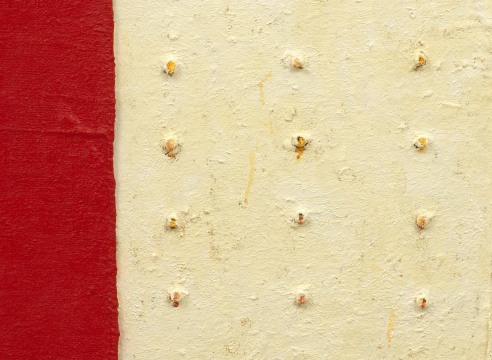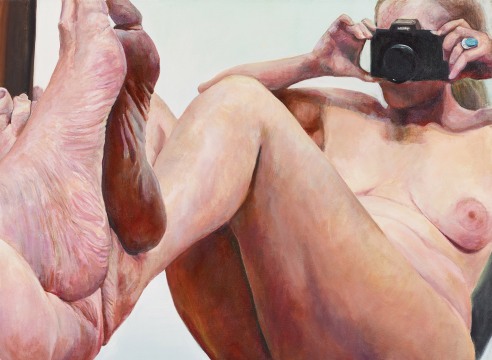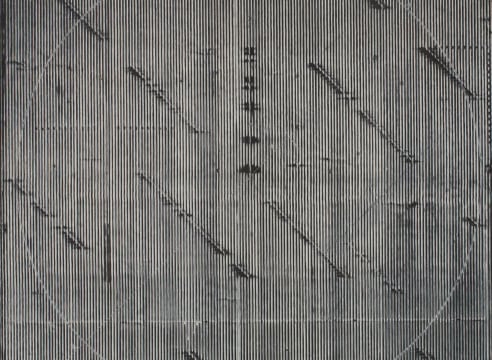
Frieze New York 2014
Stand D26
Main Galleries Section
Randall's Island, New York
Heidi Bucher
Melvin Edwards
Tomislav Gotovac
Harmony Hammond
Joan Semmel
Jack Whitten
Alexander Gray Associates presents an exhibition of the conceptually paralleled artistic processes of Gallery artists from diverse geographical and cultural contexts. Bringing together recent and historical works by Heidi Bucher,
Melvin Edwards, Tomislav Gotovac, Harmony Hammond, Joan Semmel, and Jack Whitten, the exhibition explores the conceptual and thematic potential of process and mark-making through each artist’s pioneering experimentation in various media and forms.
Swiss artist Heidi Bucher’s (1926–1993) sculptural “skinnings” investigate the body in relation to historically and personally significant architectural spaces. In a highly performative process, Bucher physically rips off casted textile and latex from the floor of her father’s study, peeling away the layers of family history, represented by its architecture.
In E.C.’s View (1979), Melvin Edwards welds the industrial medium of steel into an expressive composition,
which simultaneously reflects his formalist concerns and invokes a personal relationship, here with friend and artist Ed Clark. The various shapes and complexities of the sculpture unfold as the viewer explores its multiple faces.
Debuting the work of Tomislav Gotovac (1937–2010), his ephemeral collages, such as Tamara (1964), accumulate traces of personal artifacts and daily experiences. Inspired by jazz compositions and films from his youth, Gotovac applied cinematic editing principles to create montages of everyday items, including cigarette cases, train tickets, and food labels, using personal history as his medium. Harmony Hammond’s heavily textured “weave” paintings, such as Yum Yum (1977), combine gender politics with the post-minimal concerns of materials and process, frequently occupying a space between painting and sculpture, body and object. Referencing woven cloth, Yum Yum merges the acts of weaving and painting.
Exhibited for the first time in New York, Joan Semmel’s Alborada (1968) demonstrates the artist’s early career as an abstract expressionist. Powerful brushstrokes and lines, and a vibrant palette provide a precursor to her later figurative paintings, which explore the artist’s perception of her own body. Finally, Jack Whitten pushes the medium of acrylic paint to its most plastic aspects. Whitten's Black Monolith V Full Circle: For Leroi Jones AKA Amiri Baraka (2014) serves as a memorial to the late writer and activist, an early friend of the artist. Employing Whitten’s signature application of acrylic collage, this new painting melds composition and process with an emotional punch.
Together, these artists represent the myriad ways conceptual processes based on the act of mark-making and materials can address the body, memory, space, and the charged meaning of their chosen media.
About Frieze New York
Frieze New York is an international contemporary art fair that launched in May 2012. In 2013 the fair included over 180 of the world’s leading galleries, making Frieze New York 2013 the company’s largest event to date. Like Frieze London, Frieze New York is housed in a bespoke temporary structure, suffused with natural light. The fair is located in Randall’s Island Park, Manhattan.














